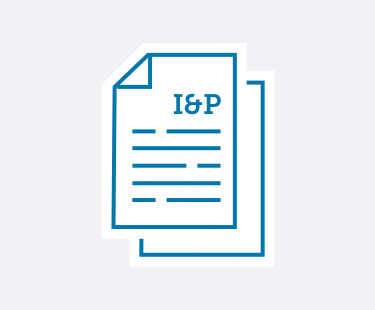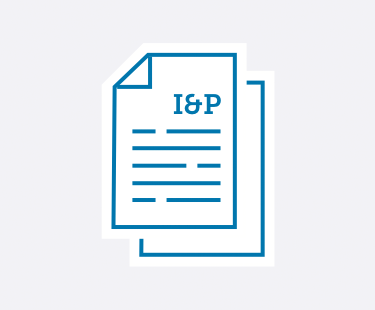

Learn practical strategies to handle emerging trends and leadership challenges in private schools.
No matter if you’re a School Head, Admission Director, Development Director, Board member, or any other private school administrator—Ideas & Perspectives, ISM’s premier private school publication, has strategic solutions for the pervasive problems you face.
- Tuition not keeping pace with your expenses? In I&P, explore how to use strategic financial planning to create your budget and appropriately adjust your tuition.
- Enrollment dropping off? Discover how to implement the right admission and enrollment management strategies that engage your community—and fill your classrooms.
- Trouble retaining teachers? Learn how you can best support your teachers using ISM’s Comprehensive Faculty Development framework. Your faculty members will become more enthusiastic about their roles—which ultimately improves student outcomes.
- Fundraising campaigns not as successful as you’d hoped? Implement ISM’s practical advice and guidance to build a thriving annual fund, construct an effective capital campaign, and secure major donors—no matter your community size or location.
- Not sure how to provide professional development—for you and your staff? Learn ways to develop and fund a successful professional development strategy. You can improve teacher-centered satisfaction and growth, which in turn strengthens student-centered learning.
- Problematic schedule? You can master the challenges of scheduling with the help of ISM’s practical advice, based on our experience with hundreds of schools and our time-tested theories.
- And so much more.
I&P has shared targeted research, up-to-date insight, and sound theory with school leaders since 1975. More than 8,500 private school decision-makers find the answers to their schools’ administrative and governance matters in our advisory letter. We give you the strategic answers you need.
As an ISM Silver or Gold member, you not only receive issues online and in print 10 times a year, but you have access to more than 600 articles in our web archive. Need help? It’s at your fingertips! Learn more and sign up for ISM's membership here.
Search
See the articles from our latest issue of Ideas & Perspectives.
Five Questions Parents Should Ask': The Question Beyond the Questions
Volume 27 No. 14 // November 4, 2002
In an August press release, the National Association of Independent Schools (NAIS), along with 34 other organizations, announced a list of five questions "for parents to ask as a more substantial way of assessing the quality of a child's education. The questions were designed for parents of school-age children attending public or private schools as an alternative to top ten lists and rankings based on test scores."
1. Already a member? Click here to login.
2. Not a member? Click here to become a member.
3. Not sure? We'll help you figure it out.
Calculating Hard Income Coverage
Volume 27 No. 13 // October 14, 2002
ISM has long recommended that private-independent schools generate sufficient hard income to cover a substantial percentage of annual operating expenses. Our recently published the ISM Stability Markers® self-scoring instrument facilitates this and several other key recommendations by providing a self-rating structure through which the Board and senior administration can assess the school’s current degree of coverage while DetermineYour School’s Best Approach to Planning: Stability Markers and a Self-Scoring Process in the future.
1. Already a member? Click here to login.
2. Not a member? Click here to become a member.
3. Not sure? We'll help you figure it out.
Professional Development and Your Senior Administrative Staff
Volume 27 No. 12 // September 27, 2002
As Head of School, you are aware that your senior administrative staff members tend to give little thought to themselves. As a group, they comprise a selfless lot, devoting untold hours to providing services to your students and to your faculty, parents, and alumni. You may have in the past encountered difficulty in persuading them to attend appropriately to their professional growth and development.
1. Already a member? Click here to login.
2. Not a member? Click here to become a member.
3. Not sure? We'll help you figure it out.
Student Performance and Class Size
Volume 27 No. 10 // August 11, 2002
Some of California’s recent public school horror stories have clouded a previously clear picture regarding elementary class size reduction and its potential to enhance long-term student performance. ISM has previously expressed its viewpoint regarding the state of Tennessee’s remarkable Project STAR (Student-Teacher Achievement Ratio). Based on that project’s procedures and findings, we have for years routinely recommended class sizes of 13-17 in grades K-3. We have also emphasized the marketing advantages that can accrue to those private-independent schools that operate their K-3 programs within that range.
1. Already a member? Click here to login.
2. Not a member? Click here to become a member.
3. Not sure? We'll help you figure it out.
Energy Alternatives: Solar Power
Volume 27 No. 8 // June 30, 2002
Energy improvements can potentially save our nation’s schools $1.5 billion each year – while creating a better learning environment for students and faculty. For this reason, Boards of Trustees should thoughtfully consider the substantial cash savings that can result from incorporating solar energy in building operations. This is the second in a series of I&P articles on alternative, renewable energy sources. The first article focused on geothermal systems.
1. Already a member? Click here to login.
2. Not a member? Click here to become a member.
3. Not sure? We'll help you figure it out.
Ethical Issues for the Development Office
Volume 27 No. 8 // June 30, 2002
One of the prime responsibilities of the Board of Trustees is to provide strong and consistent stewardship of the school’s assets. Your school’s nonprofit (501)(c)(3) status with the Internal Revenue Service and its good name in the community are two examples of non-tangible assets that must be preserved. If your school loses either or both of these assets, its position could weaken drastically, moving you into murky, uncharted waters.
1. Already a member? Click here to login.
2. Not a member? Click here to become a member.
3. Not sure? We'll help you figure it out.
Your Endowment Fund Spending Policy: A Key Component in Fiscal Stewardship
Volume 27 No. 7 // June 4, 2002
One challenge of sound fiscal stewardship is the necessity of balancing the needs of today with those of tomorrow. Endowment, by its nature, should serve your institution in perpetuity. Yet, how can you successfully preserve the intentions of those individuals who donate to the endowment fund to sustain programs and services across future generations of students, and not necessarily for the school's current needs?
1. Already a member? Click here to login.
2. Not a member? Click here to become a member.
3. Not sure? We'll help you figure it out.
The Board’s Role in the Annual Audit
Volume 27 No. 7 // June 4, 2002
Fiscal oversight and fiduciary responsibility are terms synonymous with trusteeship. The audit report is a key document that affirms, both to you and to those whose assets you steward, that the school is operating within generally accepted accounting principles (often referred to as GAAP).1
1. Already a member? Click here to login.
2. Not a member? Click here to become a member.
3. Not sure? We'll help you figure it out.
Stability Markers and Tuition Remission
Volume 27 No. 7 // June 4, 2002
Even with the most carefully crafted plans, tuition remission can subtly undercut effective implementation of the plan. Automatically awarded tuition remission creates an unpredictable reduction in net tuition revenue, further challenging a school’s already finite resources. Competing financial needs are created (for example, more funds devoted to tuition remission while the school is committed to improving faculty compensation). Last-minute and major adjustments to the strategic financial plan – and, by default, the strategic plan – must be wrenchingly incorporated. The end result: The timely implementation of the goals you have worked hard to develop and build consensus on is disrupted.
1. Already a member? Click here to login.
2. Not a member? Click here to become a member.
3. Not sure? We'll help you figure it out.
Community Service: Taking It to the Street
Volume 27 No. 7 // June 4, 2002
All too often, schools plan community service programs thinking – rightly or wrongly – that everyone in the community is anxiously awaiting the generous services of their students. As Head, you kick off your school’s program each year by enthusiastically convincing the students and their parents that community service is a worthwhile endeavor and deserves everyone’s time and utmost attention. The Community Service Coordinator develops mission-driven guidelines and establishes requirements for the program. Forms are prepared for students to have signed, verifying that they have performed the requisite number of hours in meaningful ways.
1. Already a member? Click here to login.
2. Not a member? Click here to become a member.
3. Not sure? We'll help you figure it out.


